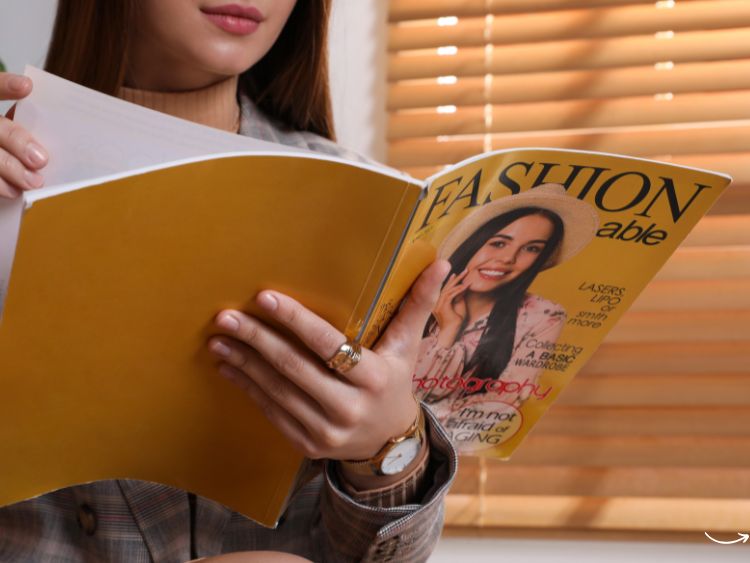The History of Fashion: A Journey Through Time
Fashion is a fascinating and ever-evolving aspect of human culture, reflecting societal changes, technological advancements, and artistic expressions. A deep dive into the history of fashion offers not just an insight into clothing styles, but a glimpse into the worldviews, politics, and economies that shaped these trends. In this article, we’ll explore the rich history of fashion as chronicled in various books, each offering unique perspectives and analyses.
Fashion has always been more than just clothes; it’s a powerful medium of expression. Whether it’s the flowing robes of ancient Greece or the sharply tailored suits of the 20th century, fashion tells the story of the times. And what better way to explore this story than through books dedicated to the history of fashion?
In this article, we’ll unravel the intricate tapestry of fashion history as documented in some of the most influential books on the subject. Whether you’re a budding fashionista, a seasoned designer, or just someone with a passion for history, understanding the evolution of fashion can offer a new lens through which to view the world.
The Evolution of Fashion: Key Periods and Their Influences
1. Ancient Civilizations: The Birth of Fashion
Fashion as we know it has its roots in ancient civilizations. Books like The Ancient History of Fashion delve into how early humans used clothing not just for protection, but as a form of social status and identity. In ancient Egypt, for example, clothing was a symbol of status, with elaborate wigs and jewelry denoting one’s place in society. Meanwhile, in Greece and Rome, draped garments like the toga and chiton became symbols of citizenship and authority.
- Key Influences: Religion, social hierarchy, and climate.
- Notable Books: The Ancient History of Fashion, Draped in Time: Clothing in Ancient Greece and Rome.
2. The Middle Ages: Functionality Meets Faith
The Middle Ages saw fashion take on a more practical role, though it was still deeply intertwined with religious and social norms. Books such as Medieval Clothing and Textiles highlight how clothing during this period was more about functionality and modesty. However, the emergence of the Gothic style, with its emphasis on flowing lines and intricate details, added a layer of complexity to medieval fashion.
- Key Influences: Religion, feudalism, and emerging trade routes.
- Notable Books: Medieval Clothing and Textiles, Fashioning the Gothic.
3. The Renaissance: A Rebirth of Elegance
The Renaissance marked a period of rediscovery in art, culture, and fashion. Fashion books that focus on this era, such as The Renaissance Dress: A Guide, explore how the revival of classical antiquity inspired new styles. The use of luxurious fabrics, elaborate embroidery, and the introduction of corsetry defined the period’s fashion, symbolizing wealth and power.
- Key Influences: Humanism, exploration, and the patronage of the arts.
- Notable Books: The Renaissance Dress: A Guide, Fashion and the Renaissance.
The Industrial Revolution: Fashion for the Masses
The Industrial Revolution brought about a seismic shift in fashion. With the advent of mass production, clothing became more accessible to the average person. Books like The Industrialization of Fashion detail how the production of textiles and garments shifted from artisanal, handcrafted pieces to machine-made products, democratizing fashion in the process.
- Key Influences: Technology, urbanization, and capitalism.
- Notable Books: The Industrialization of Fashion, From Hand to Machine: The Evolution of Clothing Production.
The 20th Century: The Rise of Modern Fashion
The 20th century was a period of rapid change and innovation in fashion. From the flapper dresses of the 1920s to the power suits of the 1980s, fashion became a reflection of societal shifts. Books like The Century of Fashion provide an in-depth look at how fashion responded to wars, economic depressions, and cultural revolutions.
- Key Influences: War, media, and globalization.
- Notable Books: The Century of Fashion, Fashion Since 1900.
The Role of Fashion Books in Understanding History
Fashion books are more than just catalogues of clothing; they’re essential tools for understanding the broader historical context. Whether you’re reading about the opulence of the Baroque era or the minimalist designs of the 21st century, these books offer a window into the values, challenges, and triumphs of past societies.
FAQs
- Why is it important to study the history of fashion? Studying fashion history provides insights into cultural, social, and economic aspects of different eras, helping us understand how fashion reflects and influences society.
- What are some must-read books on the history of fashion? Some essential reads include The Ancient History of Fashion, The Century of Fashion, and Fashion Since 1900.
- How has fashion evolved over the centuries? Fashion has evolved from simple, functional garments in ancient times to complex, trend-driven styles in the modern era, influenced by technological advances, cultural shifts, and global trade.
Conclusion
The history of fashion is a vast and varied subject, rich with stories of creativity, innovation, and cultural exchange. Books on this topic are invaluable resources for anyone looking to understand not just how fashion has evolved, but why it has taken the paths it has. Whether you’re looking to expand your knowledge or simply appreciate the artistry of fashion, these books offer a comprehensive look at the journey of style through the ages.
Authoritative Links
- http://www.fashionhistorytimeline.com
- http://www.metmuseum.org/toah/hd/cost/hd_cost.htm
- http://www.vam.ac.uk/content/articles/t/timeline-of-20th-century-fashion/
This article is designed to be both informative and engaging, providing readers with a thorough understanding of the history of fashion as documented in key texts. It aims to spark interest and encourage further exploration of this fascinating topic.
